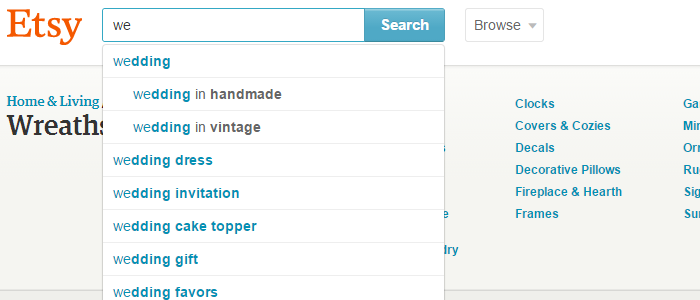Etsy is a bustling online marketplace where creativity meets commerce. To succeed as a seller on Etsy, one crucial skill you need to master is keyword research. Effectively researching and selecting keywords can significantly boost your shop’s visibility and attract potential buyers. In this detailed guide, we’ll show you how to create an Etsy keyword research strategy like a pro.
Step 1: Understand Etsy’s Search Algorithm
Before diving into Etsy keyword research, it’s essential to grasp how Etsy’s search algorithm works. Etsy’s search engine uses a combination of factors to rank listings, including relevancy, customer behavior, and listing quality. Understanding these factors will help you make informed decisions during your keyword research process.
Step 2: Brainstorm Initial Keywords
Begin by brainstorming a list of keywords that relate to your products. Consider different variations, synonyms, and phrases that potential buyers might use when searching for items like yours. Don’t worry about being exhaustive at this stage; you’ll refine your list later.
Step 3: Use Etsy’s Auto-Suggest Feature
Etsy’s search bar has an auto-suggest feature that can provide valuable keyword ideas. Start typing one of your initial keywords into the search bar, and you’ll see a dropdown list of suggested searches. These suggestions are based on popular and relevant search queries, making them excellent keyword candidates.
Step 4: Research Competitor Keywords
Analyze the listings of your successful competitors. Look at their product titles, descriptions, and tags to identify the keywords they are using. This can provide insights into the keywords that are driving their sales and help you discover new keyword opportunities.
Step 5: Leverage Keyword Research Tools
To truly excel at Etsy keyword research, consider using keyword research tools. These tools can provide data on search volume, competition, and related keywords. Some popular keyword research tools for Etsy include Marmalead, eRank, and EtsyRank. These tools can help you identify high-performing keywords and track your progress.
Step 6: Focus on Long-Tail Keywords
Long-tail keywords are longer, more specific keyword phrases. While they may have lower search volume than broad keywords, they often convert better because they reflect more intent. Include long-tail keywords in your research to capture niche markets and attract highly targeted traffic.
Step 7: Evaluate Keyword Competition
Assess the competition for each keyword. High-competition keywords may be challenging to rank for, especially if you’re just starting. Instead, prioritize keywords with a moderate level of competition and build from there.
Step 8: Consider Seasonal and Trending Keywords
Keep an eye on seasonal trends and holidays that are relevant to your products. Incorporating seasonal keywords can help you take advantage of increased demand during specific times of the year.
Step 9: Prioritize Relevancy
While it’s essential to choose keywords with decent search volume, prioritize relevancy. Select keywords that accurately describe your products and align with what potential buyers are looking for. Relevance is a crucial factor in Etsy’s search algorithm.
Step 10: Create Keyword-Rich Listings
With your selected keywords in hand, optimize your product titles, descriptions, and tags. Ensure that your listings are informative and engaging while naturally incorporating your chosen keywords. Strive for a balance between optimization and readability.
Step 11: Monitor and Adapt
Keyword research is not a one-time task; it’s an ongoing process. Regularly monitor your shop’s performance using Etsy analytics and adjust your keywords based on what’s working and what isn’t. Be open to experimenting with new keywords and strategies to stay competitive. For monitoring and research we recommend the keyword tool of Koalanda.
Mastering Etsy keyword research is a skill that can significantly impact your shop’s success. By following this step-by-step guide and continuously refining your keyword research strategy, you can increase your shop’s visibility, attract more buyers, and ultimately boost your sales on Etsy. Remember that Etsy’s search algorithm evolves, so staying up-to-date with best practices and trends is essential to maintaining a competitive edge in the marketplace. With dedication and strategic keyword research, you can create a thriving Etsy shop that stands out among the competition.







